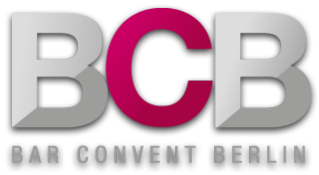Le Jardin Berlin: Bar Culture in a Garden, in the Centre of the City
© Jan-Peter Wulf
Bar ohne Namen
Entschlossen verweigert sich Savage, der Bar einen Namen zu geben. Stattdessen sind drei klassische Design-Symbole das Logo der Trinkstätte in Dalston: ein gelbes Quadrat, ein rotes Viereck, ein blauer Kreis. Am meisten wurmt den sympathischen Franzosen dabei, dass es kein Gelbes-Dreieck-Emoji gibt. Das erschwert auf komische Weise die Kommunikation. Der Instagram Account lautet: a_bar_with_shapes-for_a_name und anderenorts tauchen die Begriffe ‘Savage Bar’ oder eben ‚Bauhaus Bar‘ auf.
Für den BCB bringt Savage nun sein Barkonzept mit und mixt für uns mit Unterstützung von Russian Standard Vodka an der perfekten Bar dazu.
At Hackescher Markt the new “Le Jardin” welcomes punters with lush floral decorations, drinks refined with in-house lab ingredients, and generous hospitality. Voilà!
Yannik Walter had already hung up his bartending apron, announcing his retirement from the industry on Instagram last year. The professional communications designer actually wanted to launch his own agency. But this all changed when Tim Peters, who heads up the “Kitty Cheng” bar on Torstraße, approached him about running his own bar. And this wasn’t the first time: “In actual fact, I met Tim on my first day in Berlin,” Walter recalls – in 2017 when he started bartending at the “Amano Bar”. Back then his customer and colleague had already told him they would run a bar together one day.
Out with the event location, in with the garden
Six years later the time was right: after a 4-month renovation – cooperating with “3x3 Solutions” –former event venue “The Liberate” was converted into the “Le Jardin” cocktail bar, right under the arches of the railway line, just round the corner from the Hackescher Markt. The ostentatious golden upholstery and patterned flooring were thrown out and the bar stools re-upholstered. The distinct wooden louvres lining the long, glazed frontage remained unchanged – just like the bar counter running through the entire venue complete with all its dents and scratches left by many years of use. All adding to the patina. “The counter was custom-made by an interior designer from Hong Kong. It was shipped to Germany by container,” Walter tells us; and with its curved shape it really does organically blend with the new, nature-oriented concept comprising bottle gardens, greenery as well as artificial plants for luminaires and wall decorations.
Microgreens from the indoor farm
In the entrance area, you are met with indoor farms, with micro greens and herbs growing under ultraviolet light: lime basil (used, for instance, to infuse gin for their in-house Martini variation), amaretto herb, mint, nasturtium or lavender, to name but a few of the plants flourishing here. Other micro greens and herbs come care of partner “Gourmet Greens” that caters to many restaurants and bars with its aromatic little plants.
These are then processed in the open lab, which is visible to customers, located halfway between the front and back, the large bar and lounge areas. This is where the bar team – a total of around twelve people are employed at “Le Jardin” – get to work: with a centrifuge, rotary evaporator, ultra-sound system and the like, the flavours for the drinks are extracted from the plants here.
© Jan-Peter Wulf
Work-life balance
And Walter and Peters not only provide the equipment and scope for creativity but also money: at the beginning of each month, the bar team gets a budget at their disposal – for purchasing materials, merchandise for experimenting, for developing new ideas. And at the end of the month, at least this is the plan, they present what they have come up with. After all, impulses are what is needed if you want to release a new bar menu three times a year. Lots of holidays, above-average pay, no shift over six hours (staff work in two shifts per night) and a 4-day week is the vision – to ensure nobody has to wear themselves out and sacrifice free time, explains the longstanding bartender, who says he often missed the work-life balance. These benefits, he adds, are also to be funded by marketing the bar for exclusive events during key dates in the city – Berlinale, Fashion Week, ITB and, of course, BCB.
Heartfelt hospitality
At the heart of the concept, however, is neither the biophilic design nor the cocktails and highballs – despite their high quality and individuality – but the customers themselves. At “Le Jardin” they want to excel at hospitality, explains the bar founder, and also welcome tourists – strolling by here all day long – just as much as they do locals. That’s not really the case everywhere in the city.
© Jan-Peter Wulf
The garden is growing
There are lots of plans in the pipeline at “Le Jardin”: food events with affiliated restaurants. On the first floor: a separate Art Deco room as a retreat for those who prefer things a bit quieter, while on the ground floor the volume of the mixing desk can be pumped up to flood the place with funk, soul or jazz. And for the next outdoor season, the terrace is being spruced up – with ivy and vines as a green roof, wines by the glass and the bottle, and, to round off the French flair, a real boules court. In short, “Le Jardin” will continue to grow and flourish, just as a garden should.
© Jan-Peter Wulf
